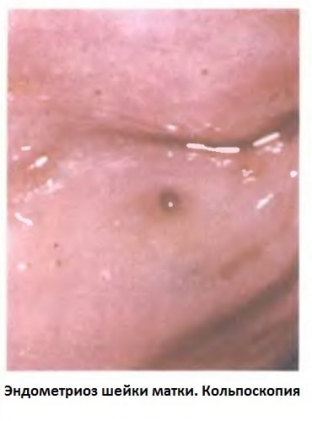Endometriosis is one of the most widespread diseases in gynecology, in different populations from 10 to 50% of women of reproductive age are susceptible to this disease. A feature of endometriosis is a wide range of lesions: pathological foci can be localized in completely different organs and structures of the small pelvis. This growth of uterine tissue is benign, but significantly affects the health of the woman and her reproductive function. Estet-portal.com tells how to recognize endometriosis of the cervix.
Symptoms and methods of diagnosis of endometriosis of the cervix
Endometriosis of the cervix occupies one of the leading places among all endometrioid pathologies. The defeat of the pathological process of the cervix is often quite difficult to diagnose, since the clinical picture of the disease is blurred, and in some cases may be completely absent. But timely detection and treatment of endometriosis of the cervix can save a woman from many unpleasant consequences of such a pathology. In order to diagnose endometriosis of the cervix, a set of studies is performed, after which it is possible to choose the optimal treatment regimen for each patient.
Cervical endometriosis:
- causes of endometriosis of the cervix;
- clinical presentation of endometriosis of the cervix;
- methods for diagnosing endometriosis of the cervix.
Causes of endometriosis of the cervix
The main cause of the development of endometriosis of the cervix is a traumatic factor that contributes to the implantation of uterine endometrial cells in the tissue of the cervix. Mechanical damage during gynecological operations in the uterine cavity, diathermoconization of the cervix, as well as childbirth and abortion can damage the epithelium of the cervix, thus creating favorable conditions for the development of endometriosis. An embryonic path of development of this pathology is also possible: endometriosis develops from the elements of the Müllerian tubercle of the primary vaginal plate. The probability of spreading the endometrioid process to the cervix by the lymphogenous or hematogenous route from other foci of the pathological process is also considered.
Clinical picture of endometriosis of the cervix
The clinical picture of endometriosis of the cervix depends primarily on the depth and prevalence of the pathological process. Depending on the depth of the lesion, the following types of endometriosis of the cervix are distinguished:
- ectocervical endometriosis of the vaginal part of the cervix;
- endocervical endometriosis of the vaginal part of the cervix;
- cervical endometriosis.
With endometriosis of the cervix, patients complain of the presence of slight discharge of a smearing character of brown or dark red color before menstruation, as well as after or during intercourse. Pain syndrome for endometriosis of the cervix is not typical, sometimes pain can occur if atresia of the cervical canal or endometrioid lesion of the uterine isthmus is observed. In some cases, the symptoms of endometriosis of the cervix may be completely absent, and the pathology is detected only during a gynecological examination.
Methods for diagnosing endometriosis of the cervix
An important role in the diagnostic process of endometriosis of the cervix is played by a routine gynecological examination of the cervix in the mirrors. During this study, endometriotic lesions are visualized as nodular or fine-grained lesions on the mucous membrane of the cervix, dark purple or red.
 Lesions can enlarge significantly during menstrual bleeding, in some cases they open up and empty. After menstruation, the foci of endometriosis decrease in size and become pale. An important diagnostic study is colposcopy and cervicoscopy, which allows diagnosing paracervical extension of endometriosis in the presence of lateral mucosal defects.
Lesions can enlarge significantly during menstrual bleeding, in some cases they open up and empty. After menstruation, the foci of endometriosis decrease in size and become pale. An important diagnostic study is colposcopy and cervicoscopy, which allows diagnosing paracervical extension of endometriosis in the presence of lateral mucosal defects.








Add a comment